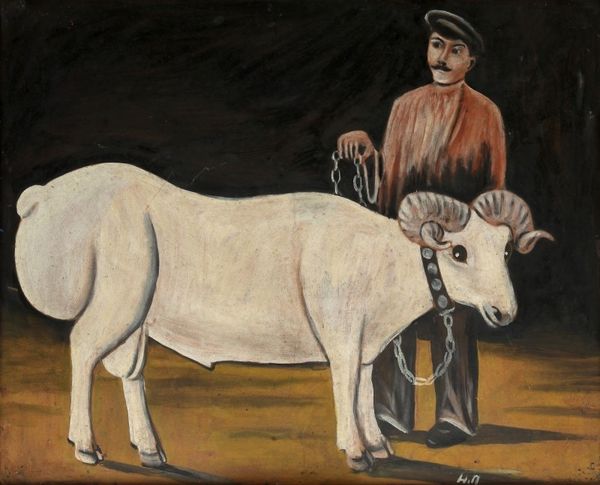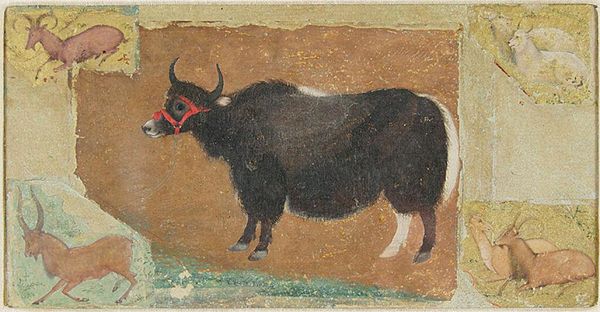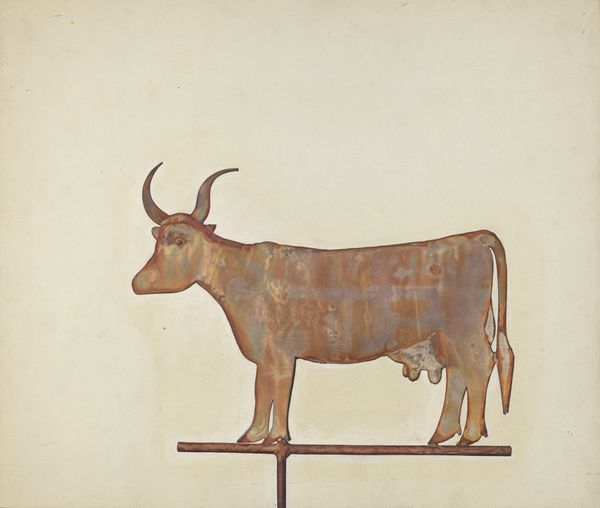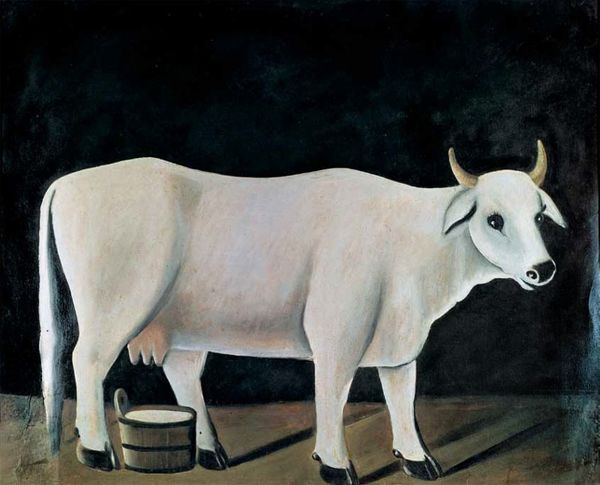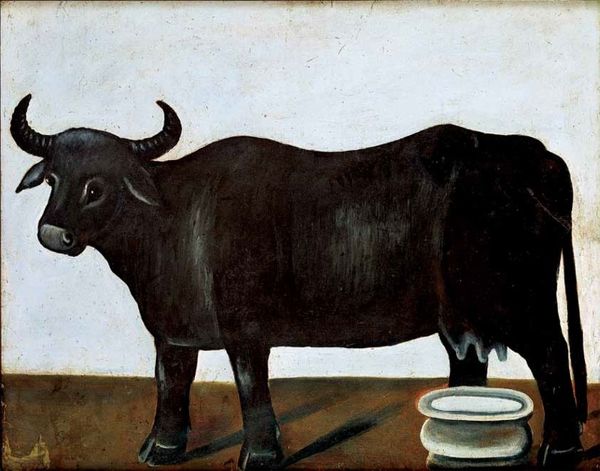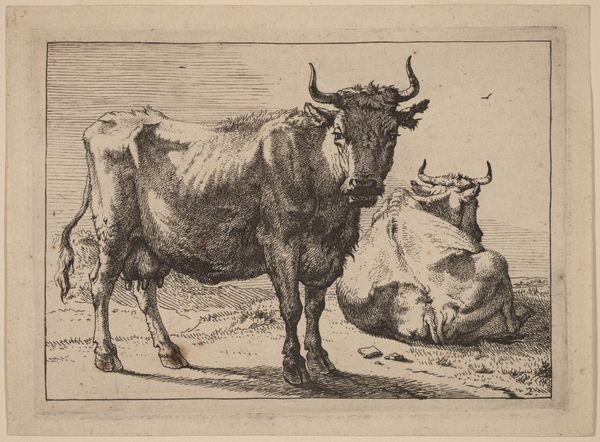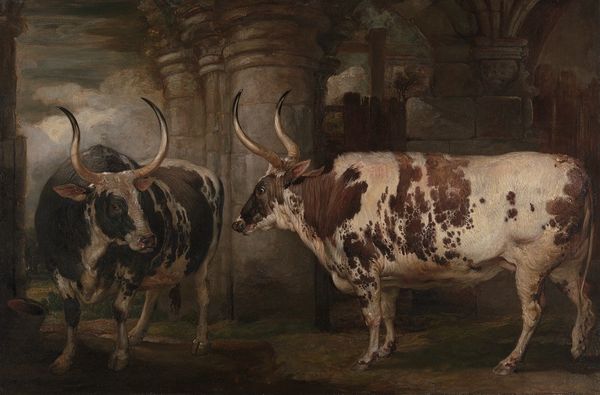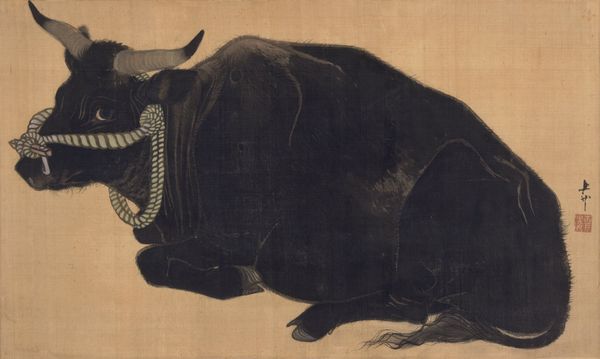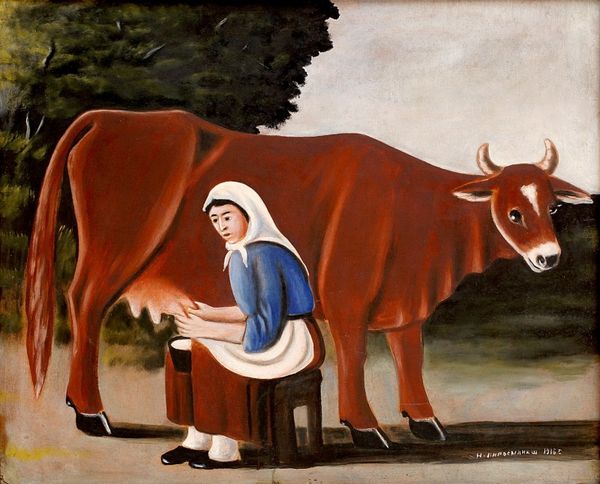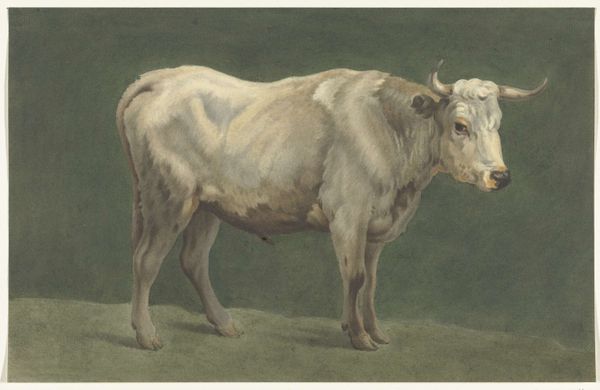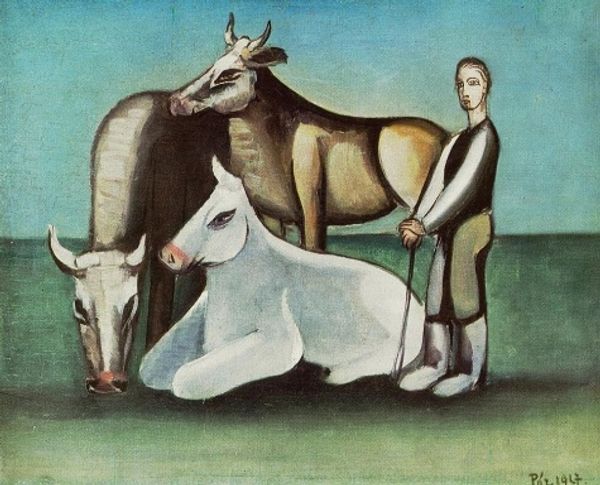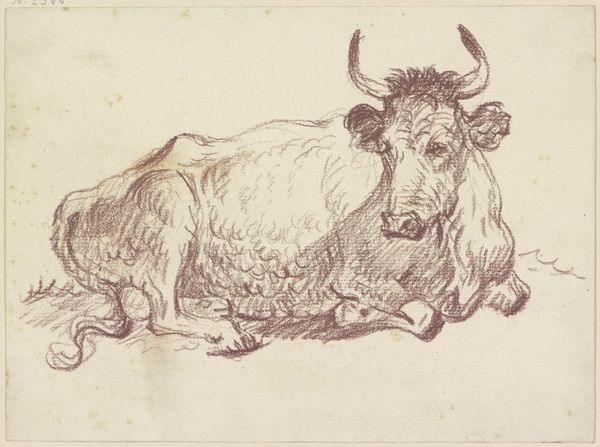
Copyright: Public domain
Editor: Here we have Niko Pirosmani's "Farmer with a Bull," painted in 1916 using oil on canvas. The color palette feels very warm, earthy even, and the figures appear very still against this dark backdrop. How do you interpret this work? Curator: Pirosmani’s work transcends mere portraiture. This piece, created during a period of intense social upheaval in Georgia, invites us to consider the relationship between labor, land, and identity. How does the positioning of the farmer and the bull speak to their intertwined destinies, reflective of a society deeply rooted in agrarian life, yet undergoing rapid modernization and industrialization? Editor: That's interesting! I hadn’t thought about it in the context of modernization. Curator: Indeed. This piece offers a counter-narrative to typical portrayals of rural life. Is this an idyllic pastoral scene, or does it hint at the harsh realities of peasant labor, the subjugation of animals, and the struggle for survival? What does the dark background suggest to you in light of this? Editor: It makes me think that the focus is really on their figures and existence, despite the odds and all of that darkness, it stands out! Is this a common interpretation? Curator: Well, while individual readings vary, a politically conscious lens often reveals that Pirosmani's art presents the common worker with a kind of noble respect, an alternative to traditional power structures. Reflect on the gazes – the bull's melancholic stare and the farmer's steady posture. What do they tell us about agency and the burden of history? Editor: I guess I see it a bit differently now! This piece carries more weight than I initially perceived. Thank you. Curator: Exactly! By analyzing such works, we can reveal art's potential as both a reflection of and a catalyst for social change.
Comments
No comments
Be the first to comment and join the conversation on the ultimate creative platform.
